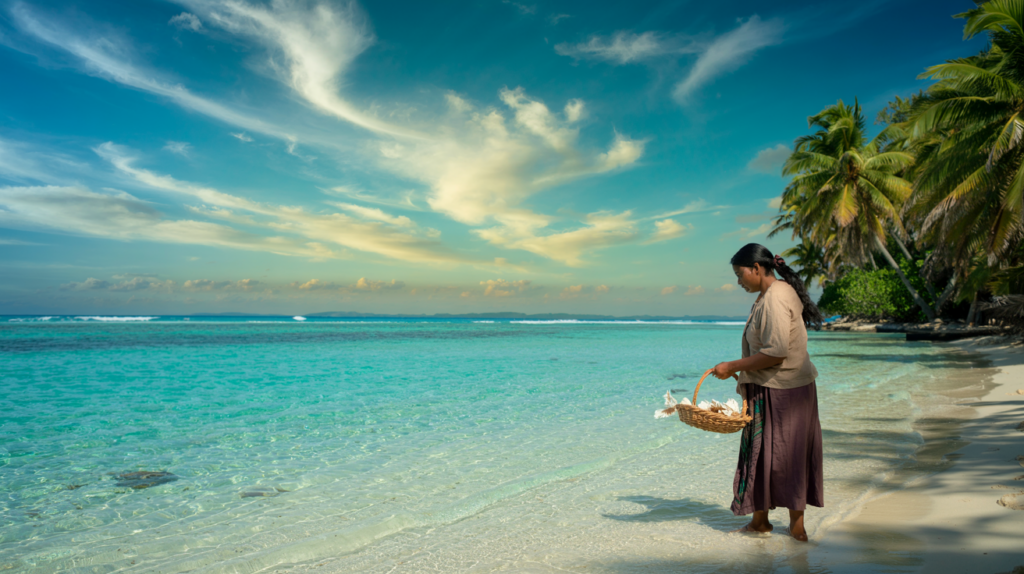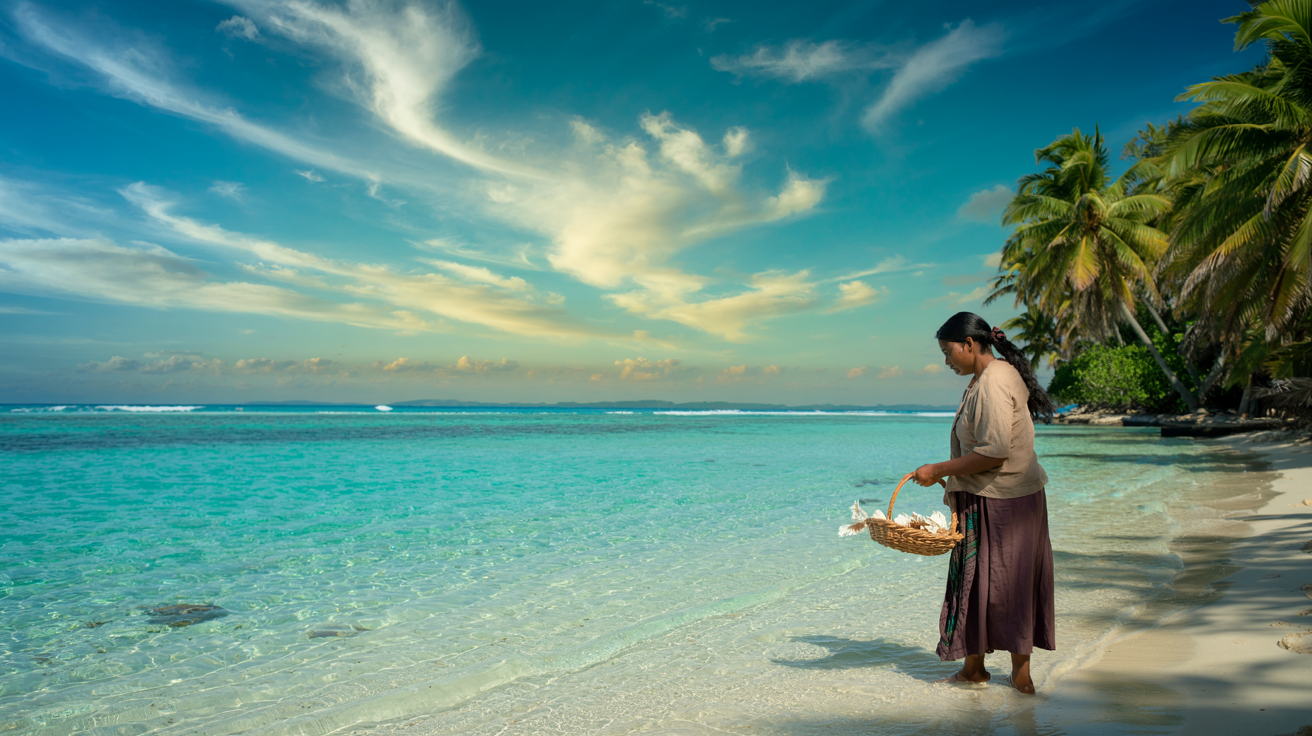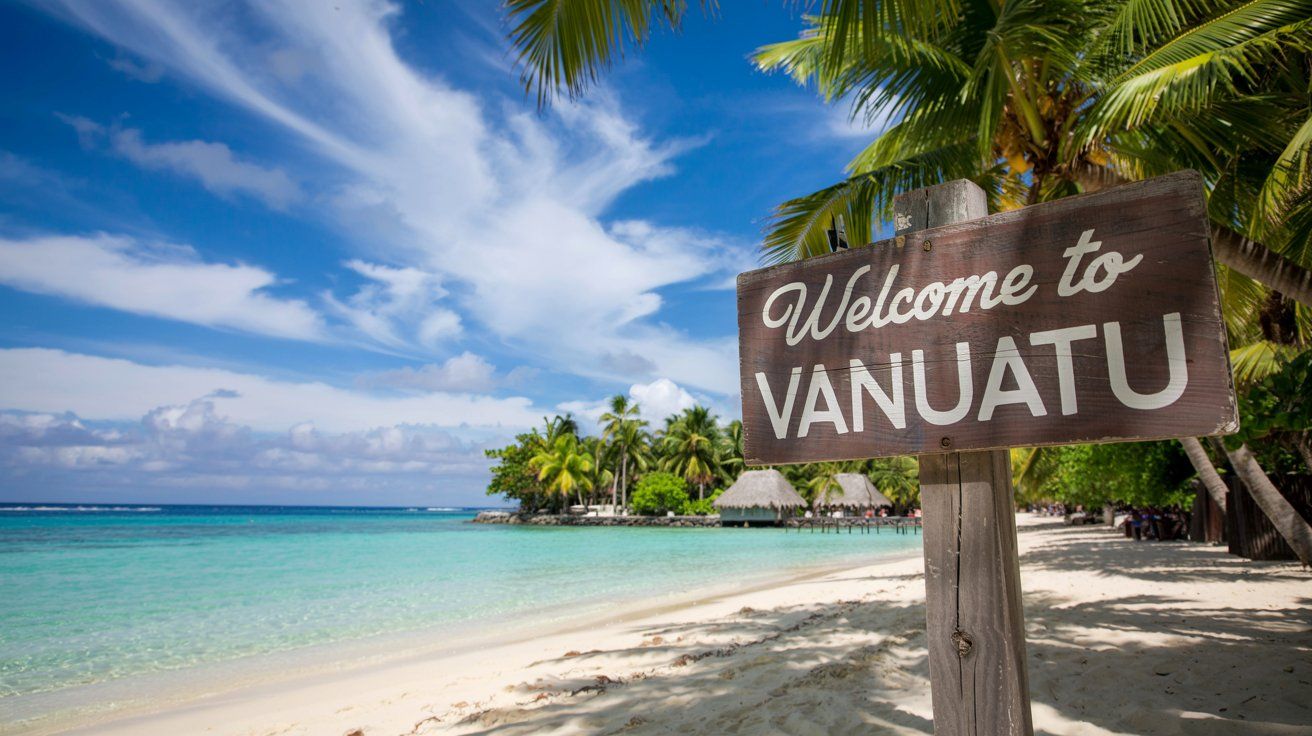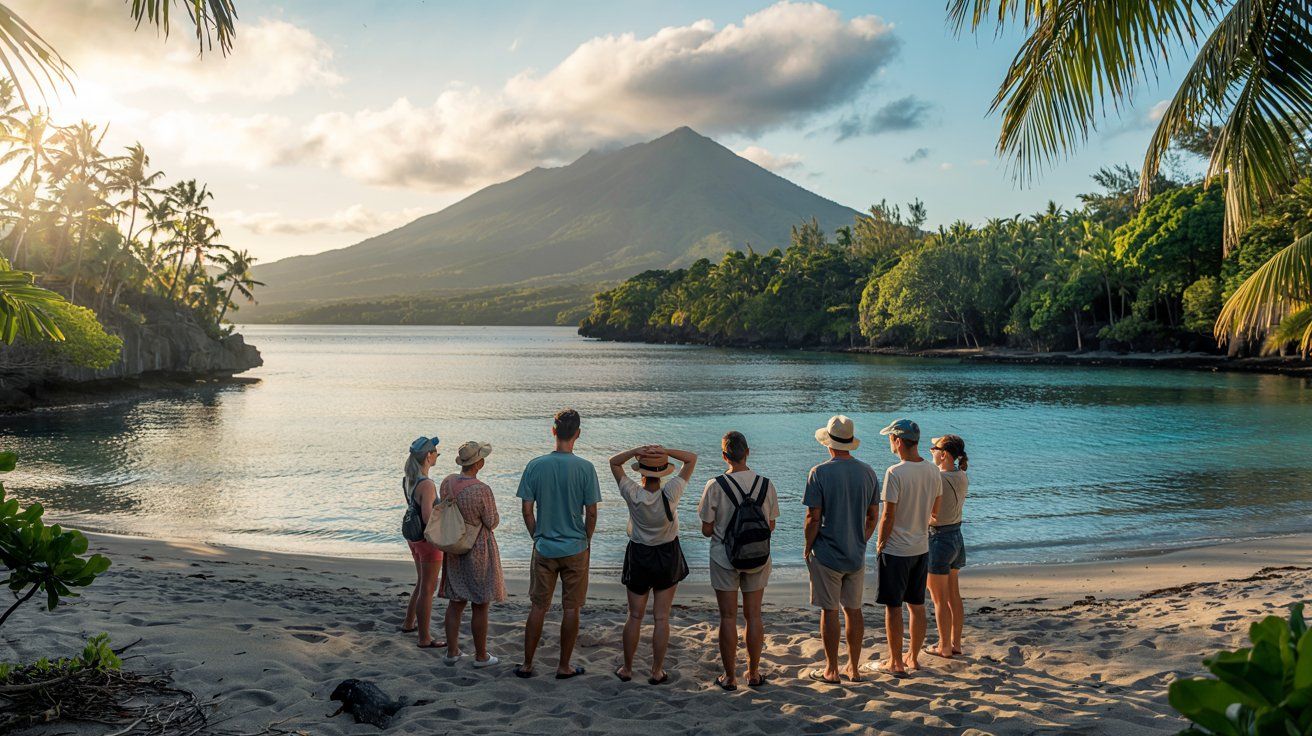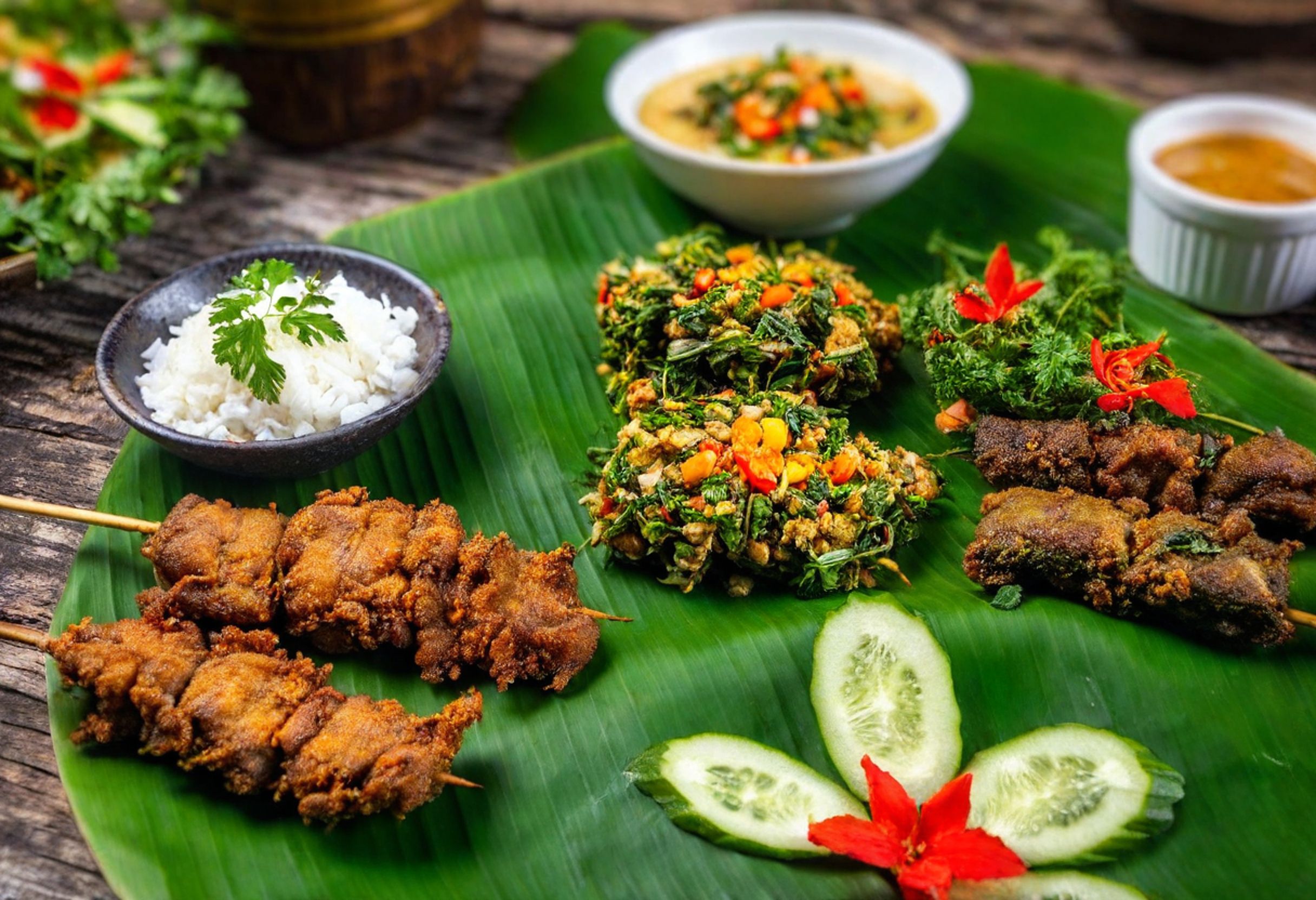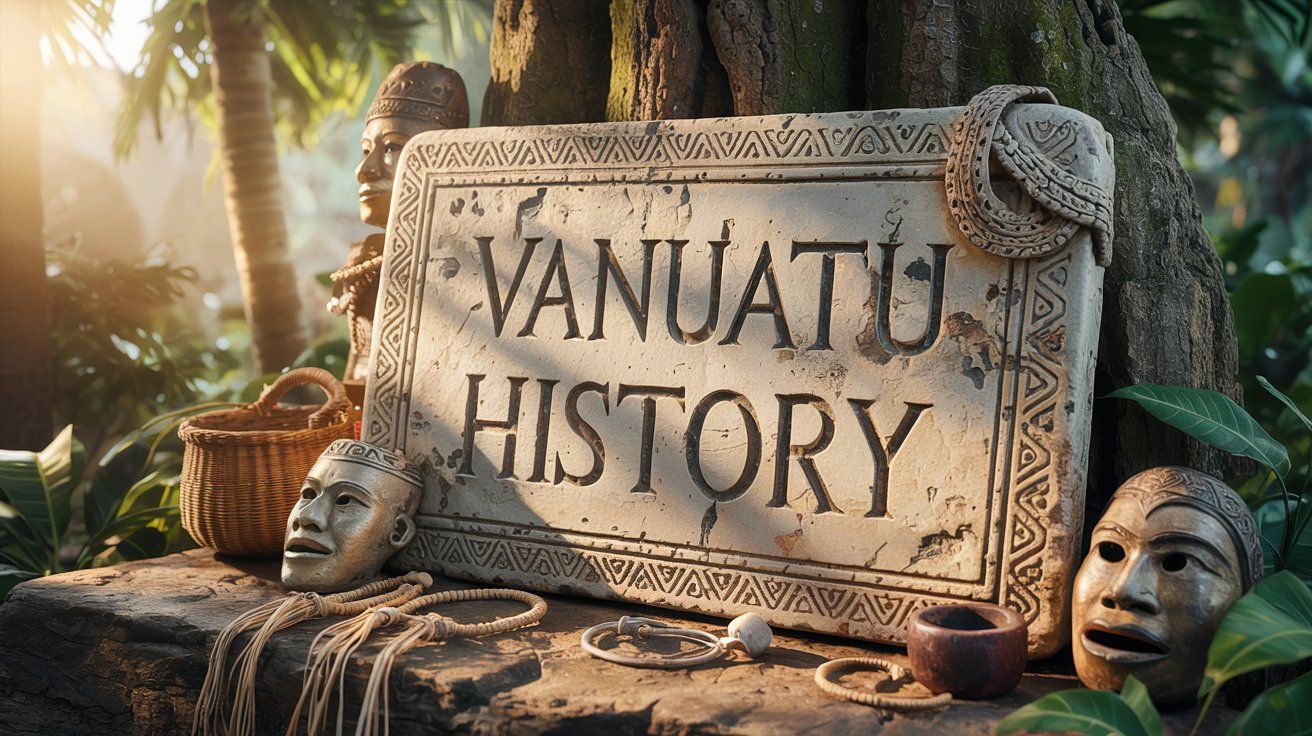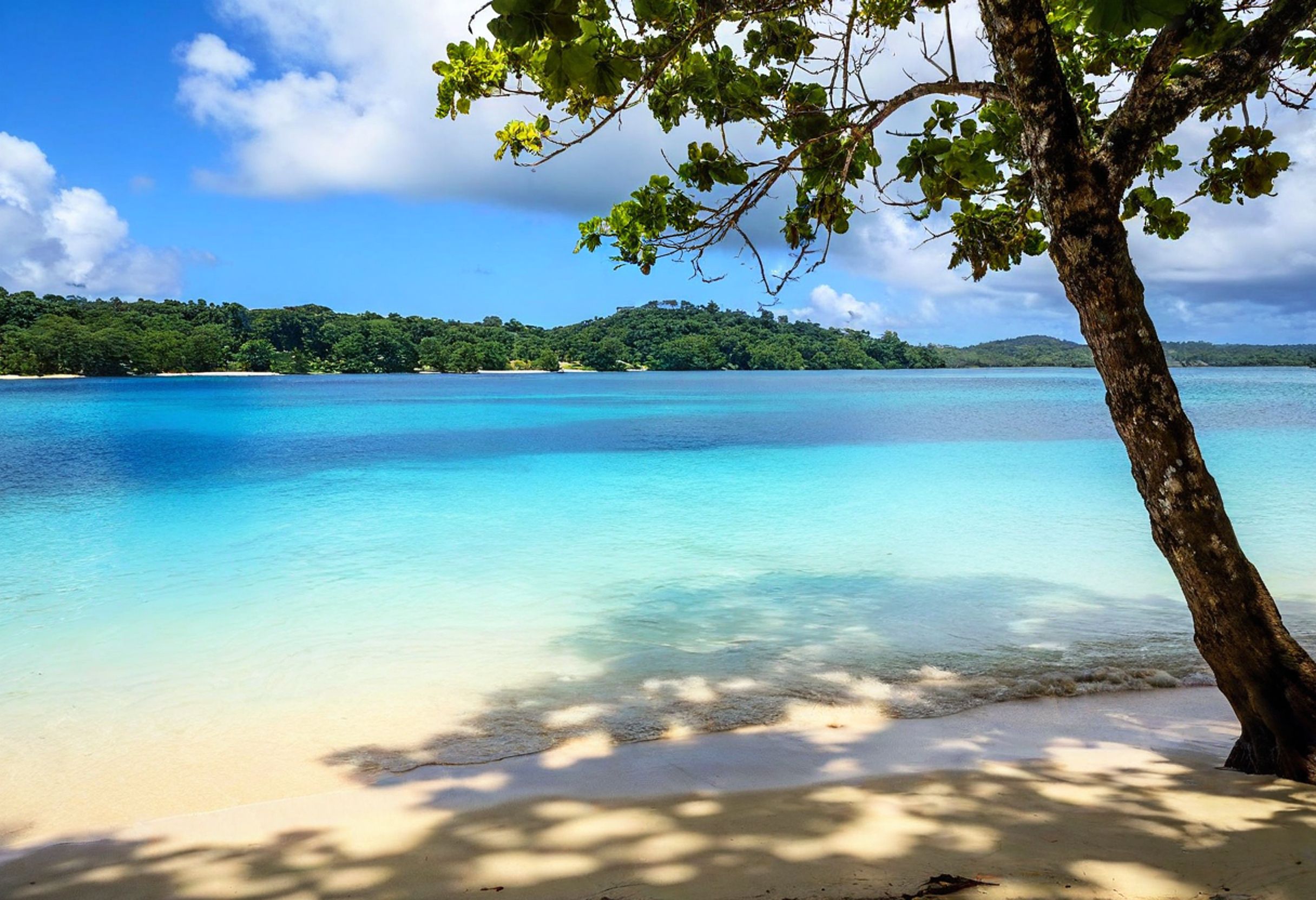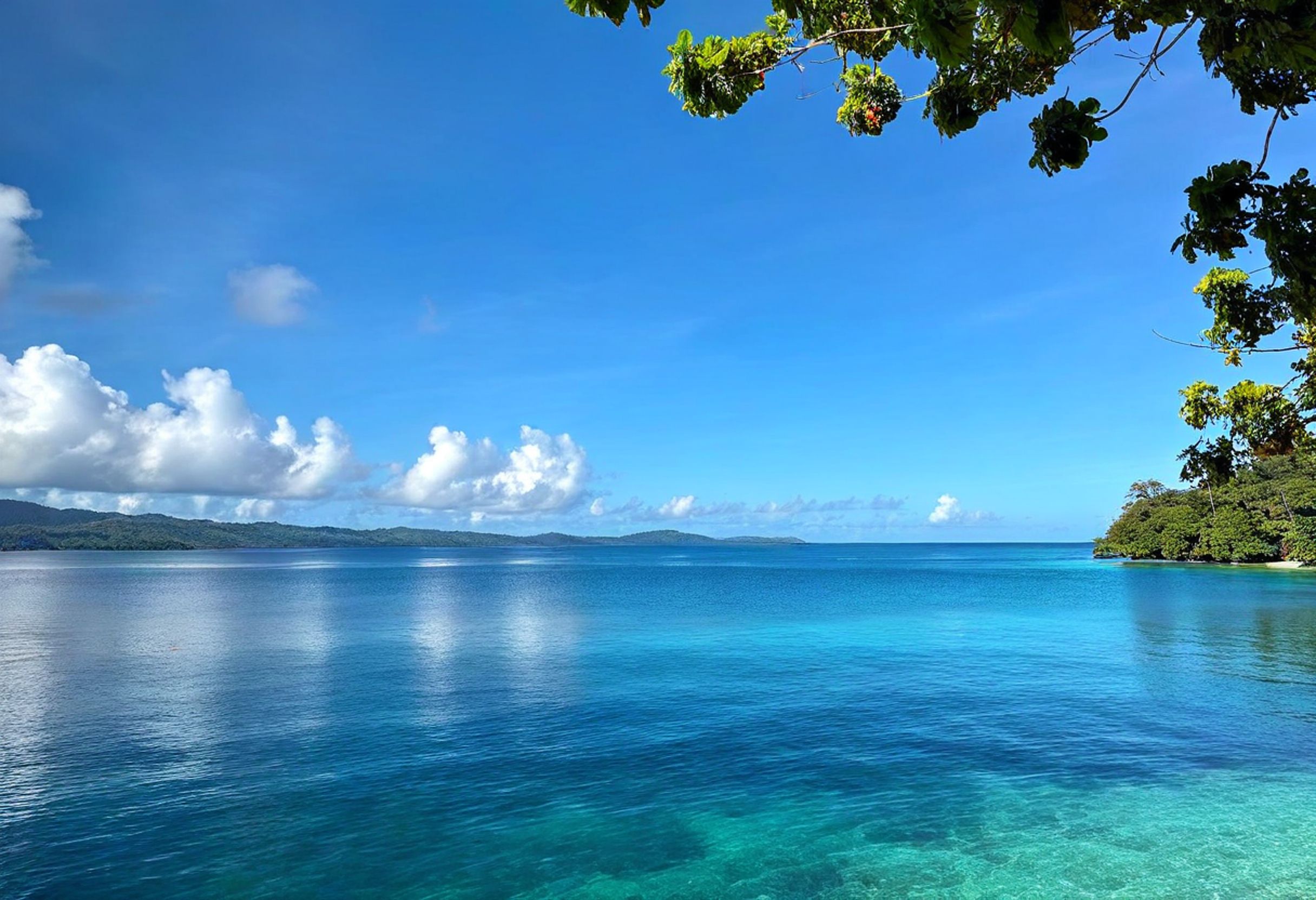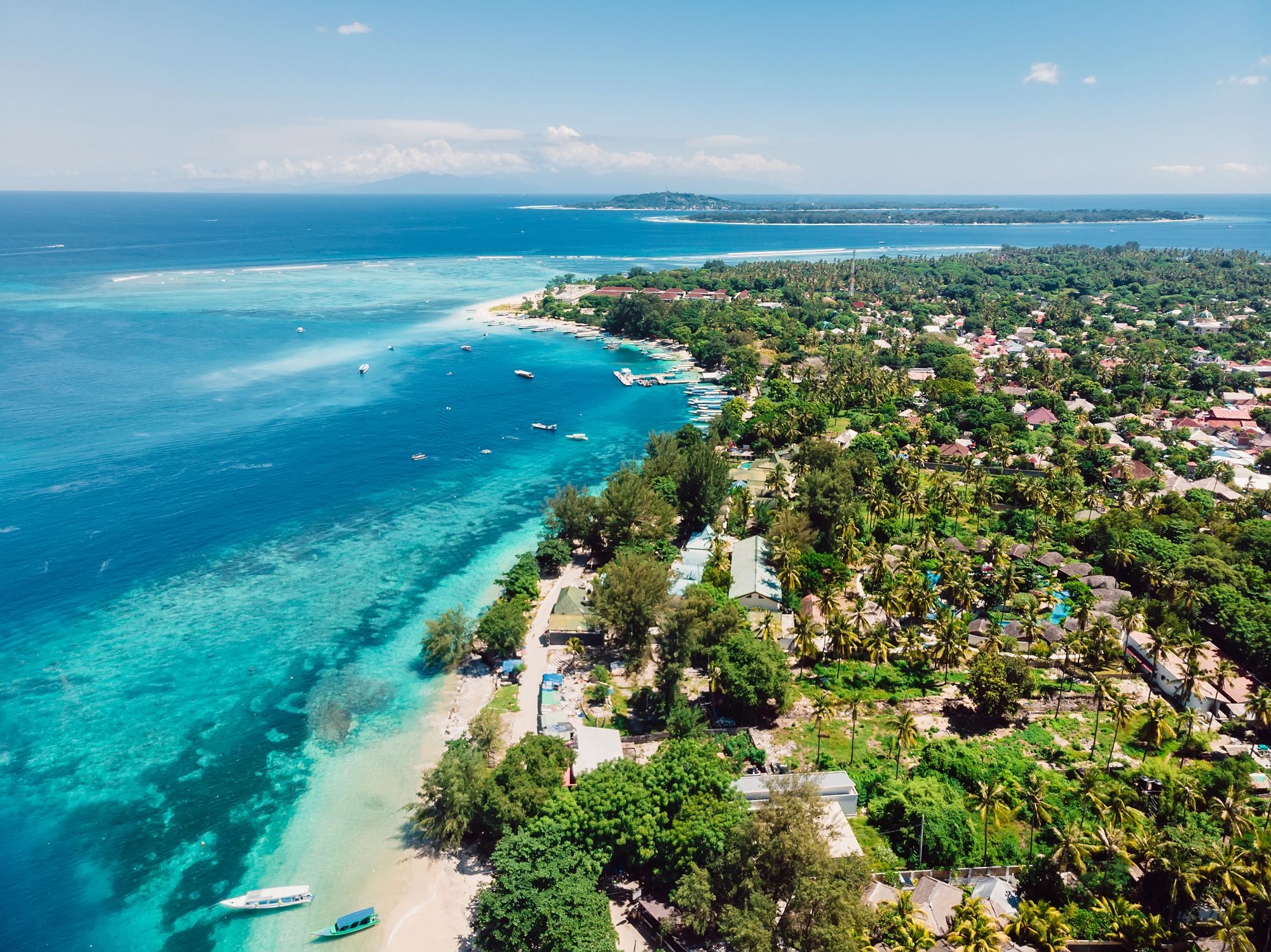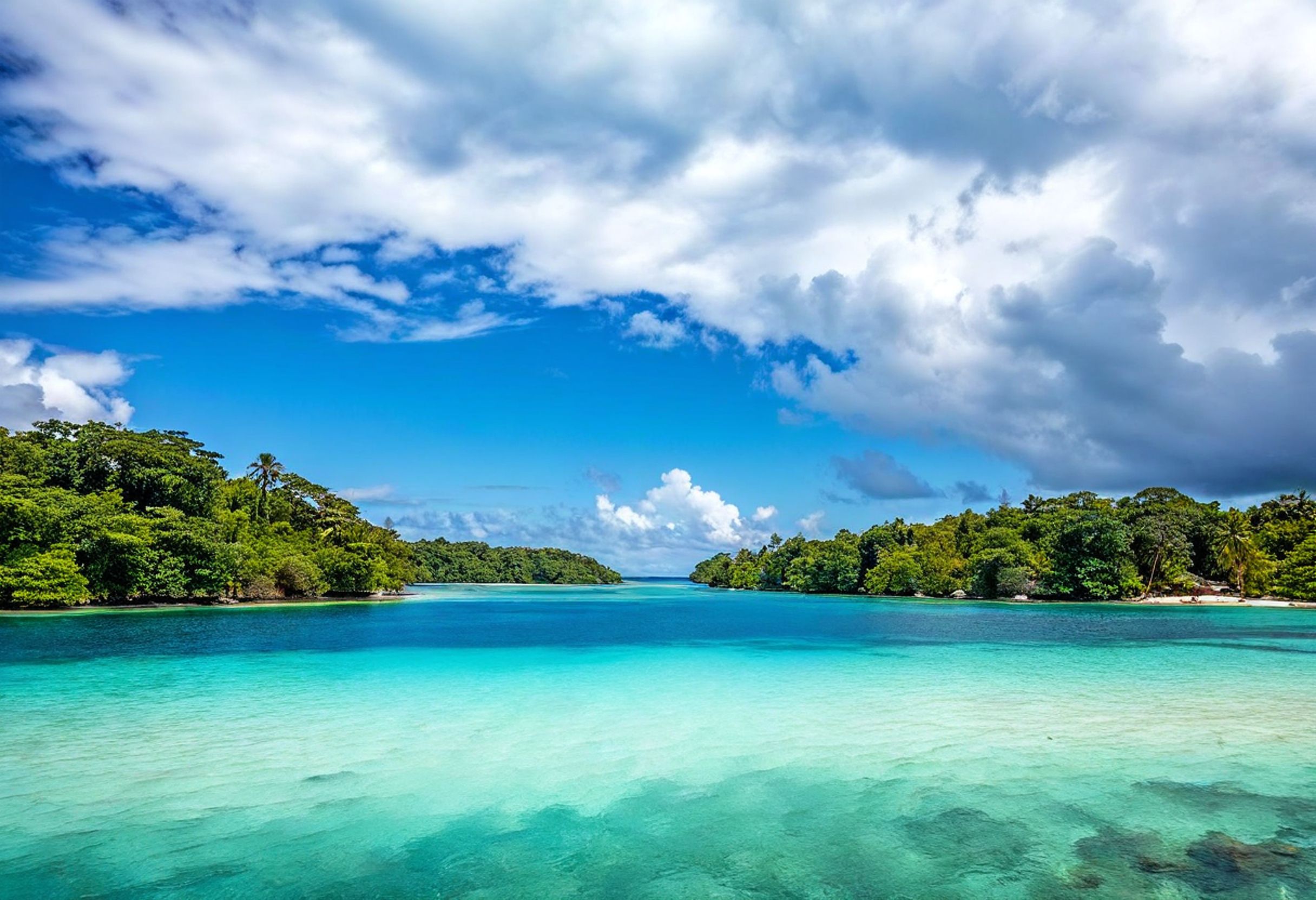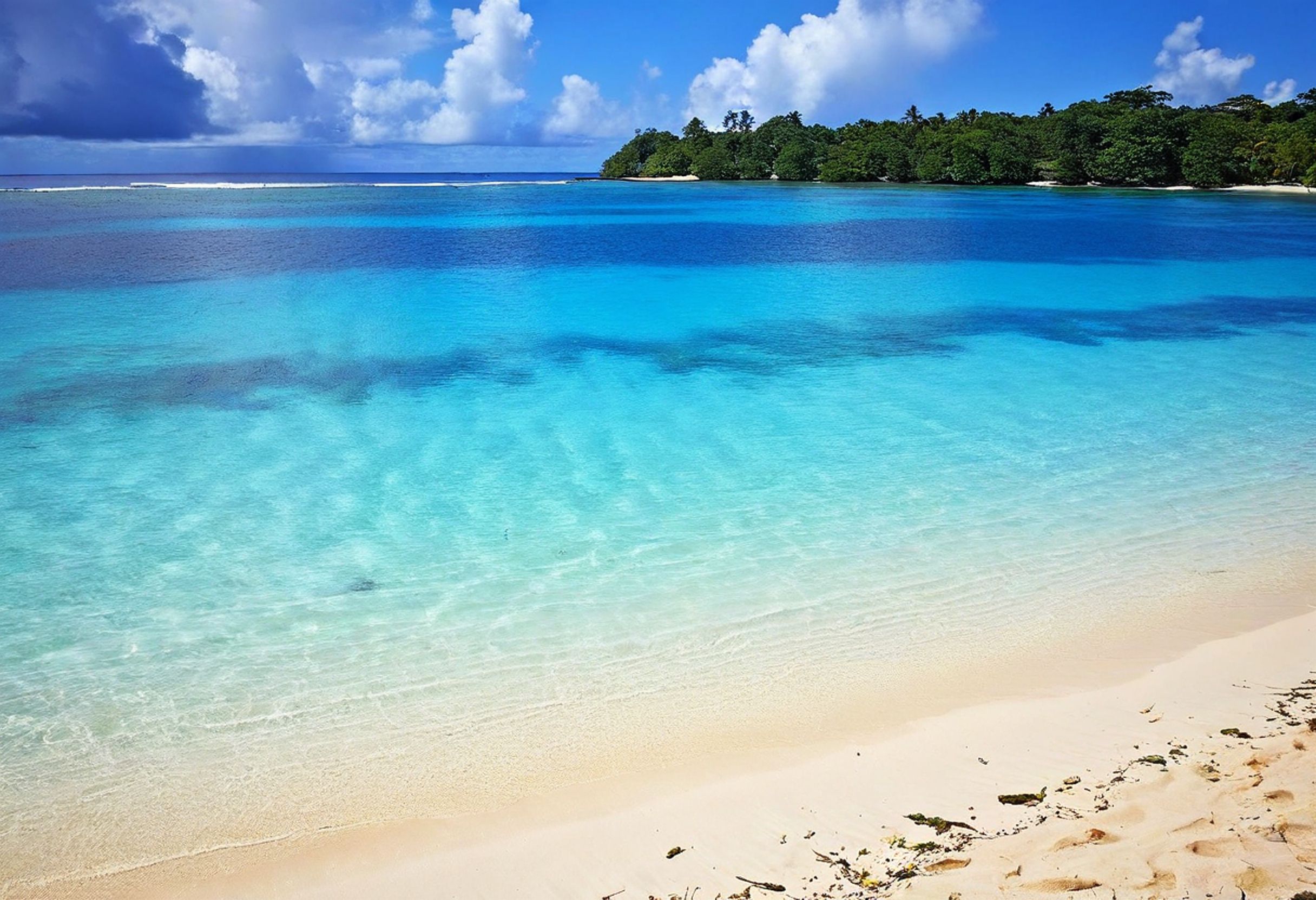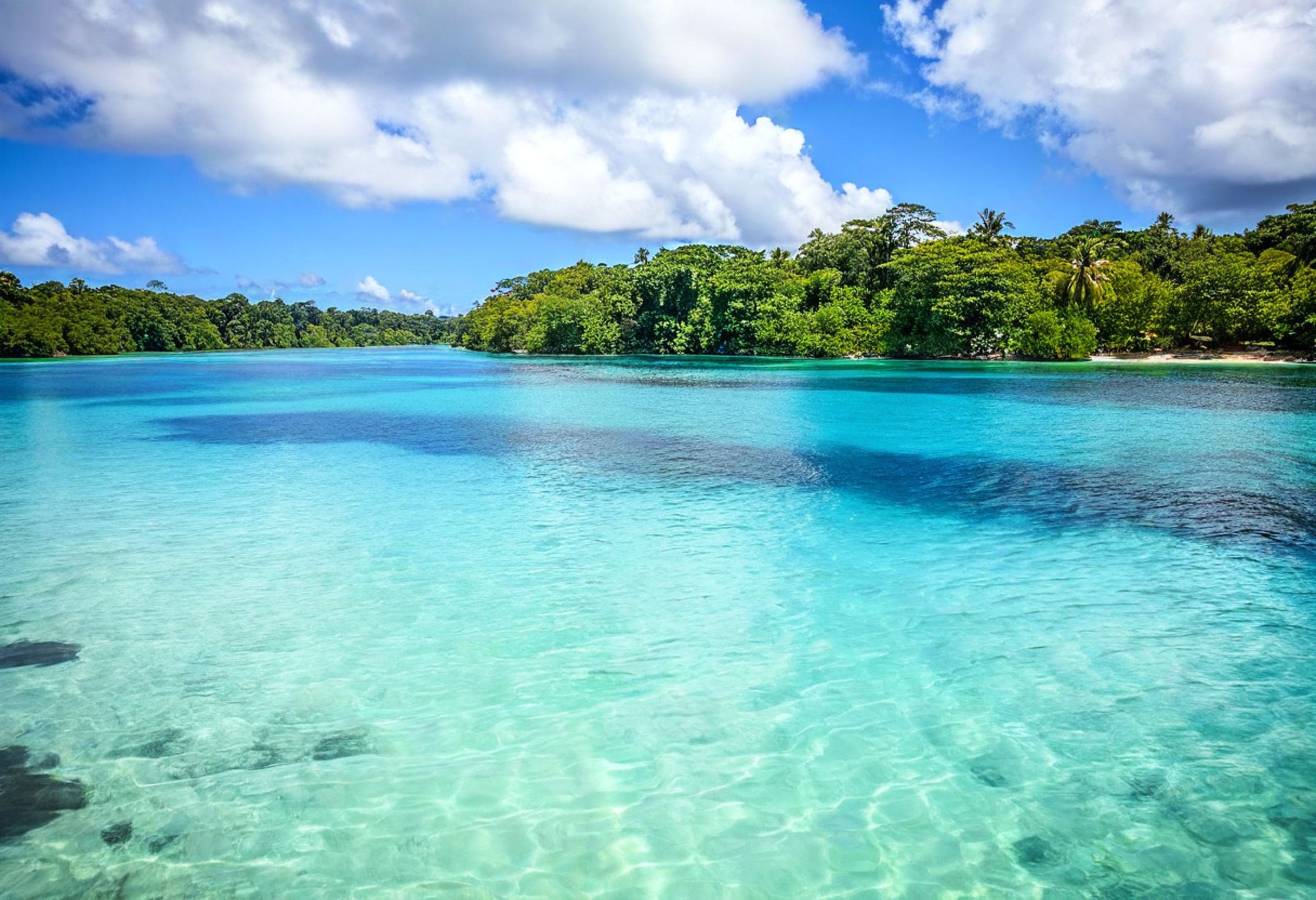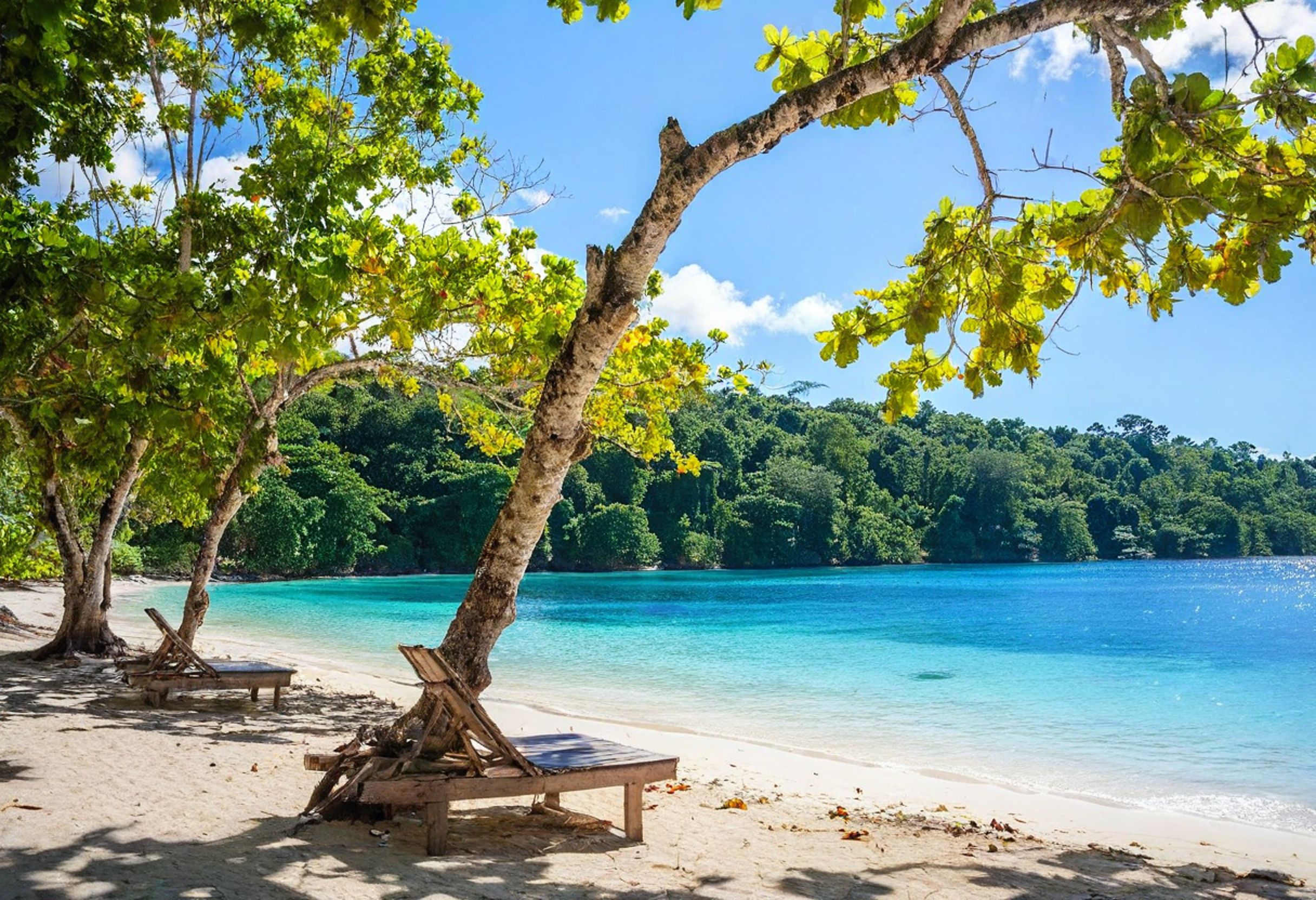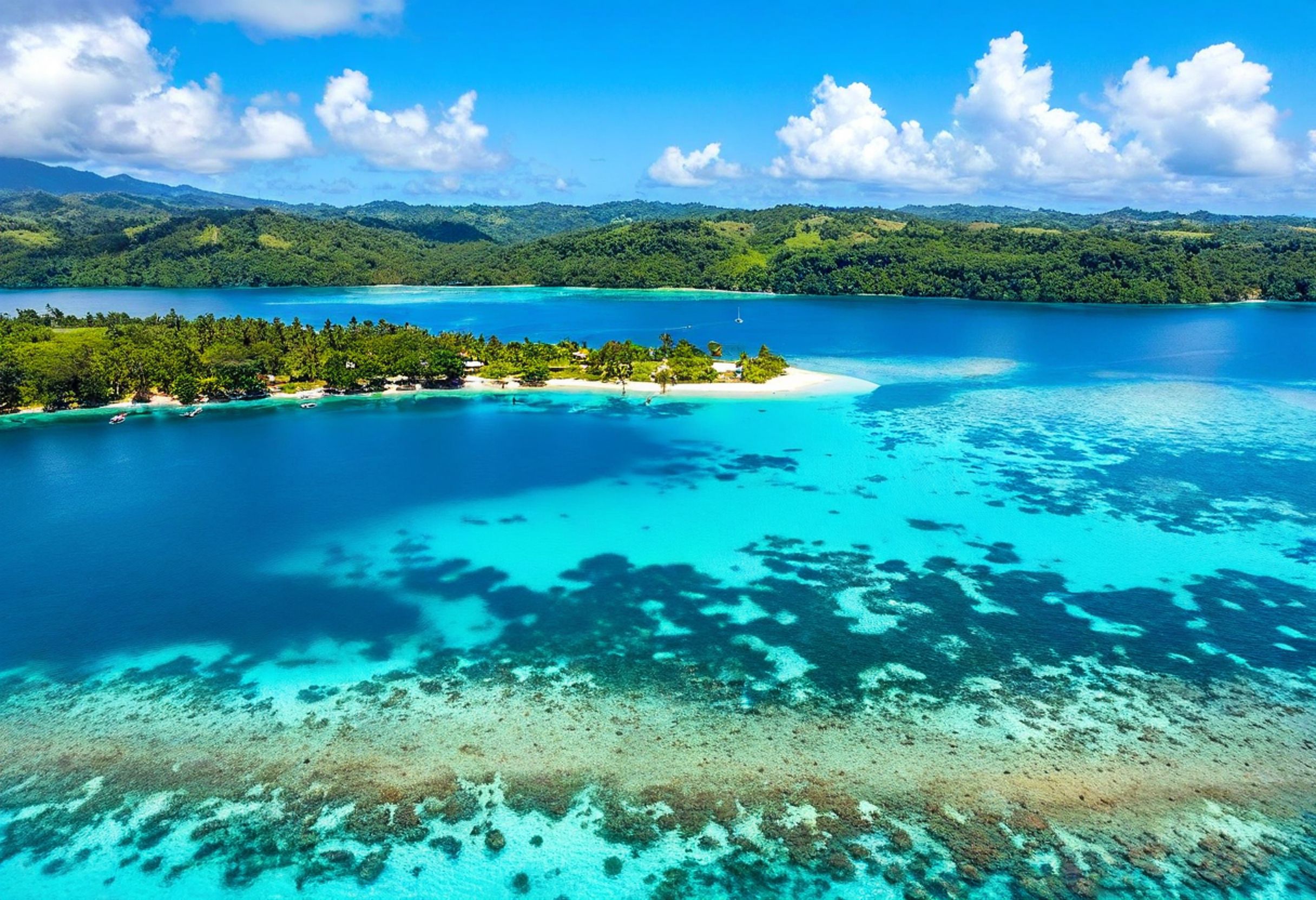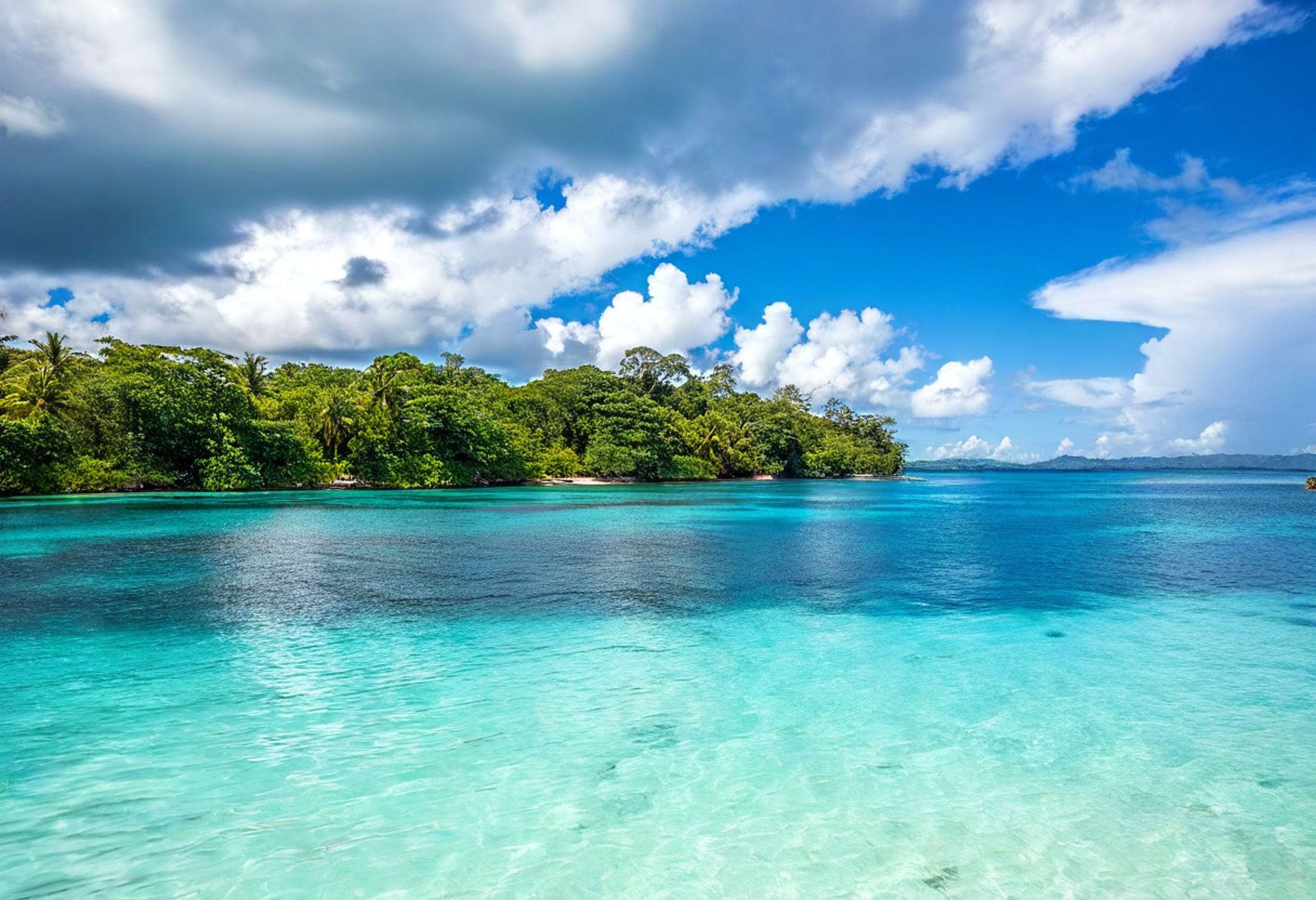Nestled in the South Pacific, Vanuatu stands as a diverse island nation with a rich cultural tapestry. The Republic of Vanuatu consists of approximately 83 islands with a population that is overwhelmingly Melanesian, called ni-Vanuatu, who make up about 94% of the country’s residents. The remaining population includes Europeans, other Pacific Islanders, and Asians who contribute to the nation’s unique blend of traditions and customs.
This archipelago nation, located about 2,300 kilometers from the Australian mainland, covers a total area of 12,190 square kilometers. Vanuatu’s religious landscape is predominantly Christian, with approximately 93.4% of the population practicing various forms of Christianity, while traditional animist beliefs are maintained by 4.6% of residents and the Baháʼí Faith by 1.4%.
Get a discount of 15% to 70% on accommodation in Vanuatu! Look for deals here:
Vanuatu Hotels, Apartments, B&Bs
The country embraces linguistic diversity with Bislama (a form of Pidgin) serving as the national language, alongside English and French as official languages, reflecting its colonial past and path to independence.
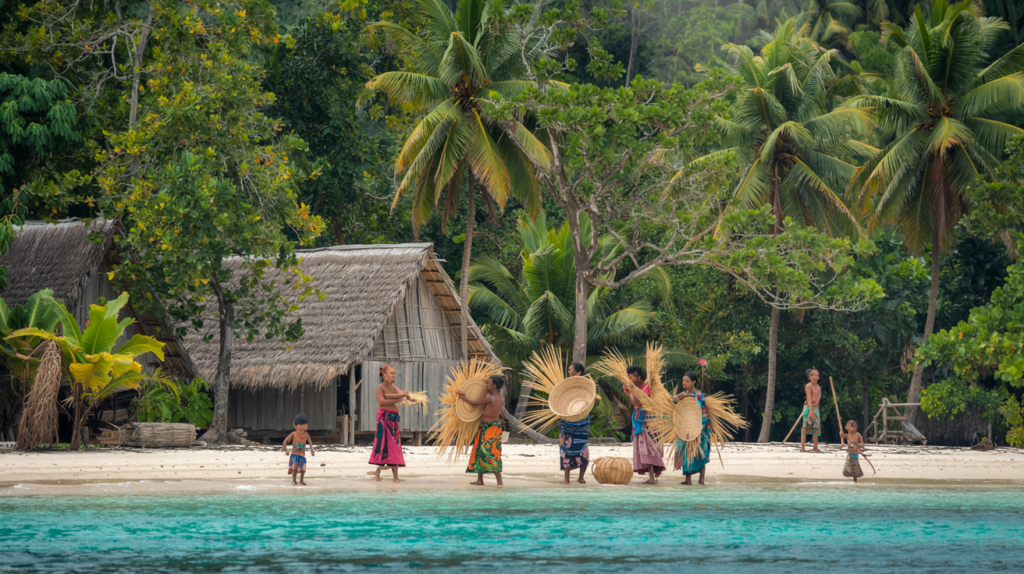
Demographics and Society
Vanuatu’s society is characterized by its diverse ethnic composition, rich cultural traditions, and predominantly rural population. The country faces both opportunities and challenges related to population growth, language diversity, and educational development.
Population Dynamics
Vanuatu has a population of approximately 196,000 according to 2002 estimates, with a growth rate of 1.66%. Most citizens (74%) live in rural areas, making Vanuatu one of the more rural nations in the Pacific region.
The country’s demographic structure shows a young population profile typical of developing nations. Birth rates remain relatively high while death rates have decreased in recent decades, contributing to steady population growth.
Net migration rates have fluctuated over time, with some ni-Vanuatu seeking employment opportunities in neighboring countries like New Zealand and Australia.
Life expectancy has improved in recent years, though infant mortality rates remain higher than in more developed Pacific nations.
Ethnic Groups and Languages
The population of Vanuatu is overwhelmingly Melanesian, with 94% identifying as ni-Vanuatu. European descendants make up approximately 4%, while other Pacific Islanders constitute about 2% of the population.
Some outlying islands have Polynesian populations, creating additional cultural diversity within the nation.
Vanuatu boasts remarkable linguistic diversity. Bislama, a creole language, serves as the national language and lingua franca. English and French are both official languages, reflecting the country’s unique colonial history as a joint British-French condominium.
Numerous indigenous Austronesian languages are spoken throughout the archipelago, making Vanuatu one of the most linguistically diverse nations per capita in the world.
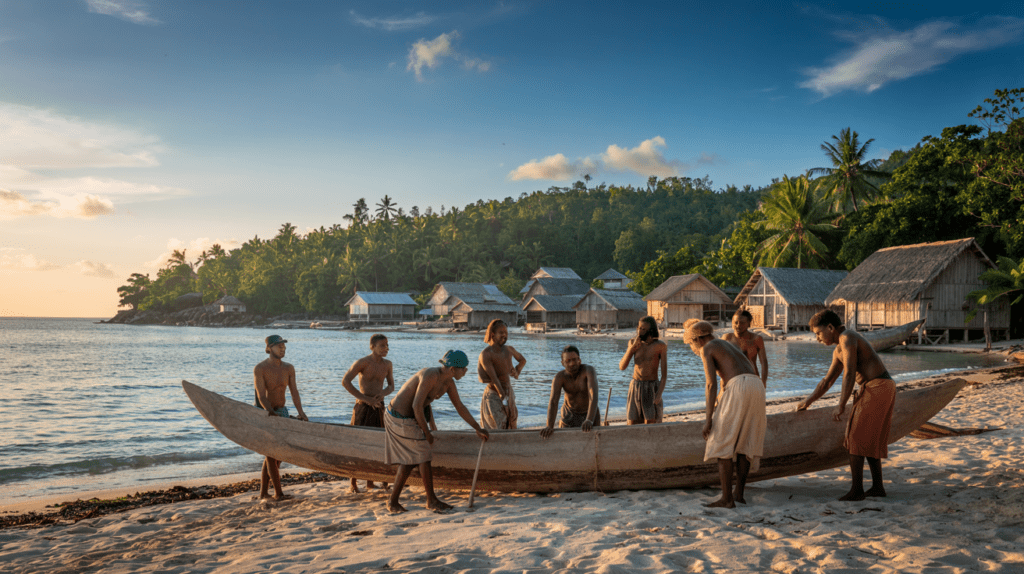
Education and Literacy
The educational system in Vanuatu faces challenges typical of developing island nations. Schools operate in both English and French, reflecting the dual colonial influence.
Access to education varies significantly between urban and rural areas. Children in remote islands often have limited educational opportunities compared to those in towns like Port Vila and Luganville.
Literacy rates have improved in recent decades but remain lower than global averages. Educational initiatives focus on expanding access to primary education and increasing secondary school enrollment.
The government continues to work with international partners to strengthen the educational infrastructure and teacher training programs throughout the country.
Religious and Cultural Landscape
Christianity dominates the religious landscape of Vanuatu, with approximately 93.4% of the population identifying as Christian. Within this, Protestantism accounts for 75.1%, Roman Catholicism for 13.5%, and other Christian denominations for 4.8%.
Traditional belief systems continue to influence daily life, with about 4.6% practicing animism. The Baháʼí Faith represents 1.4% of the population.
Cultural practices vary across islands but share common elements like kava ceremonies, which play important social and ceremonial roles throughout Vanuatu.
Customary practices remain strong, particularly in land ownership, community decision-making, and social organization. Traditional chiefs still hold significant authority in many communities.
Cultural preservation efforts work to balance modernization with traditional values and practices that form the core of ni-Vanuatu identity.
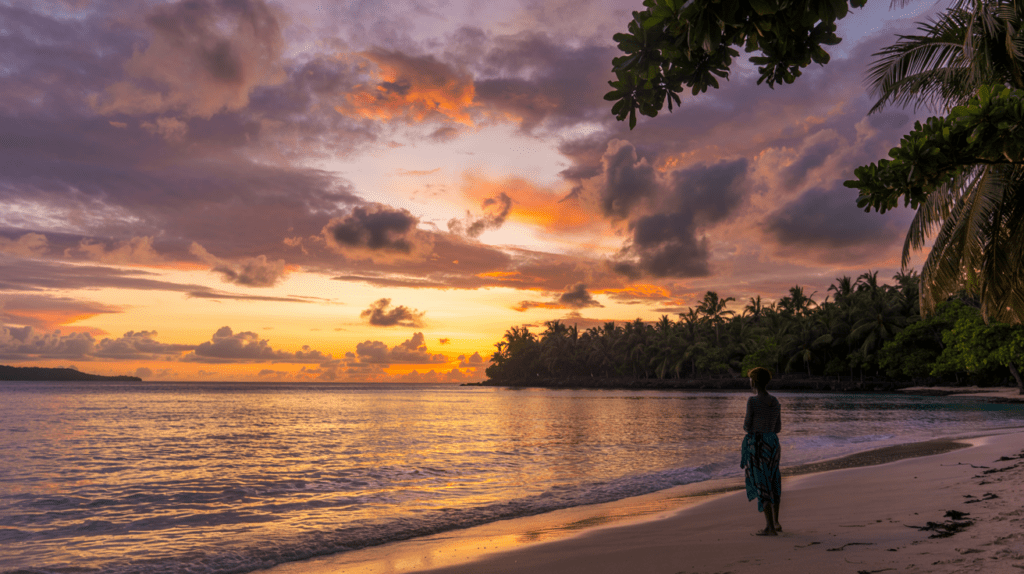
Geography and Natural Resources
Vanuatu’s geography spans over 80 islands in a Y-shaped archipelago with diverse topographical features and valuable marine resources. The nation’s position in the Pacific Ring of Fire shapes both its physical landscape and economic opportunities.
Island Topography
Vanuatu consists of over 80 islands with a total coastline of 2,528 kilometers. The islands form a Y-shaped archipelago stretching approximately 1,750 kilometers east of northern Australia and 540 kilometers northeast of New Caledonia.
Espiritu Santo is the largest island, featuring mountains rising to 1,879 meters at Mount Tabwemasana. Efate island, home to the capital Port Vila, has a mix of coastal plains and central highlands.
Many islands have active volcanoes, including Mount Yasur on Tanna Island, one of the world’s most accessible active volcanoes. The volcanic origin of the islands has created fertile soils in many regions.
Limestone formations and coral reefs surround many islands, creating dramatic coastal landscapes and natural harbors.
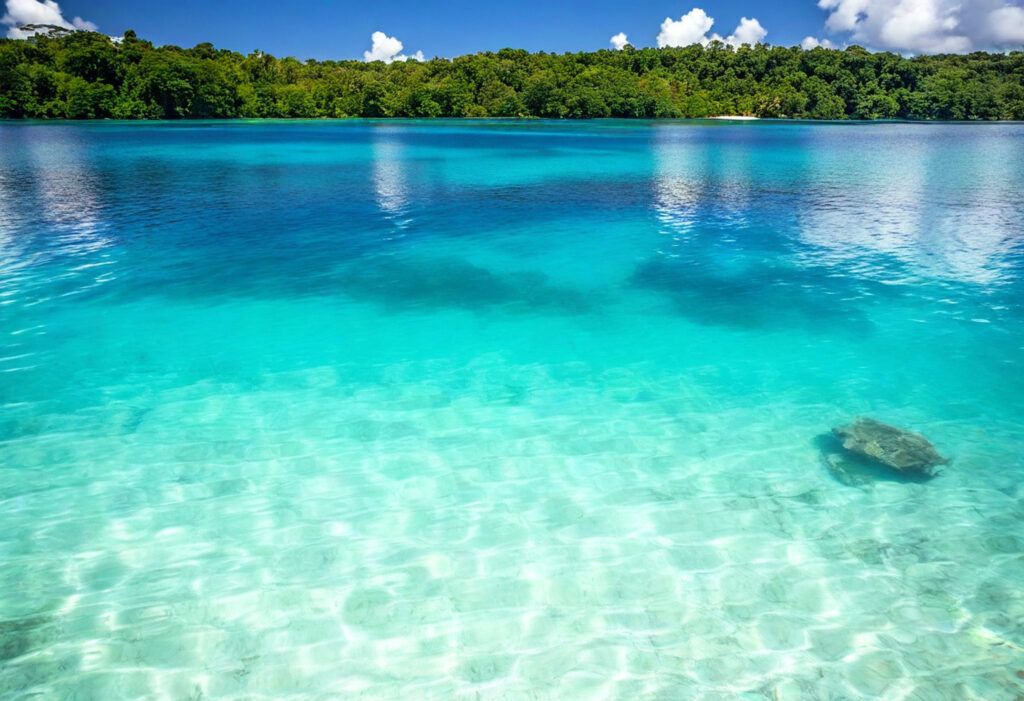
Climate and Environmental Concerns
Vanuatu experiences a tropical climate with distinct wet and dry seasons. The wet season runs from November to April, bringing higher humidity and tropical cyclones.
The islands face significant environmental challenges, particularly from climate change. Rising sea levels threaten coastal communities, while increasing ocean temperatures damage the coral reefs surrounding the islands.
Tropical cyclones regularly impact Vanuatu, with Cyclone Pam in 2015 causing devastating damage across multiple islands. Deforestation presents another environmental concern, as land is cleared for agriculture and timber.
Water scarcity affects some islands, especially during the dry season when rainfall is limited. Conservation efforts focus on protecting freshwater sources and managing watersheds.
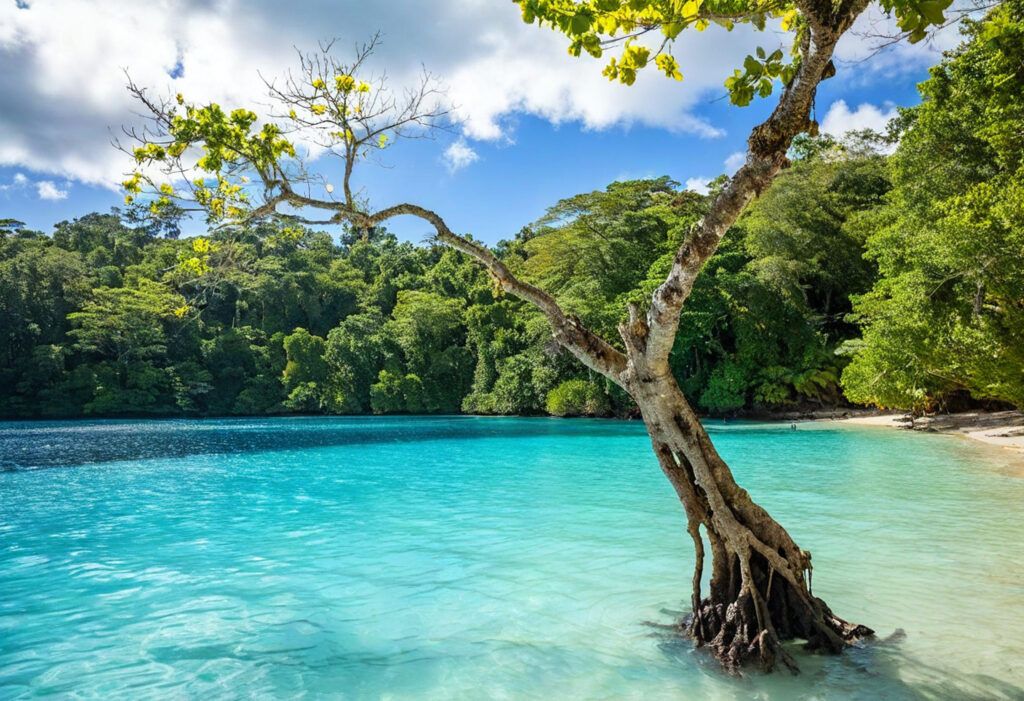
Economic Geography
Agriculture forms the backbone of Vanuatu’s economy, with copra (dried coconut kernel) being a major export crop. Cocoa, kava, tropical fruits, and vegetables are also cultivated across the islands.
Fishing provides both subsistence and commercial opportunities. The nation’s exclusive economic zone extends 200 nautical miles from its coastline, containing valuable marine resources.
Tourism centers primarily on Efate and Espiritu Santo islands, with attractions including pristine beaches, coral reefs, and cultural experiences. The industry has developed around natural features like Blue Holes on Espiritu Santo and volcanic activities on Tanna.
Mineral resources are limited, though some manganese deposits exist. The nation’s economic geography is constrained by dispersed populations across multiple islands, creating transportation challenges.
Maritime Claims and Biodiversity
Vanuatu claims a territorial sea of 12 nautical miles and continental shelf extending to the edge of its continental margin. These maritime boundaries contain rich marine ecosystems.
The waters surrounding the islands support diverse marine life, including over 4,000 species of marine mollusks and more than 1,000 fish species. Mangrove forests along the coasts provide crucial habitats for juvenile fish and protect shorelines.
Vanuatu’s terrestrial biodiversity includes unique plant species adapted to volcanic soils. The nation has established marine protected areas to preserve these ecosystems and support sustainable fishing practices.
Endemic bird species can be found across the archipelago, with conservation efforts focused on protecting their habitats from development and invasive species. Biodiversity conservation faces challenges from development pressures and climate change impacts.
Get a discount of 15% to 70% on accommodation in Vanuatu! Look for deals here:
Vanuatu Hotels, Apartments, B&Bs

